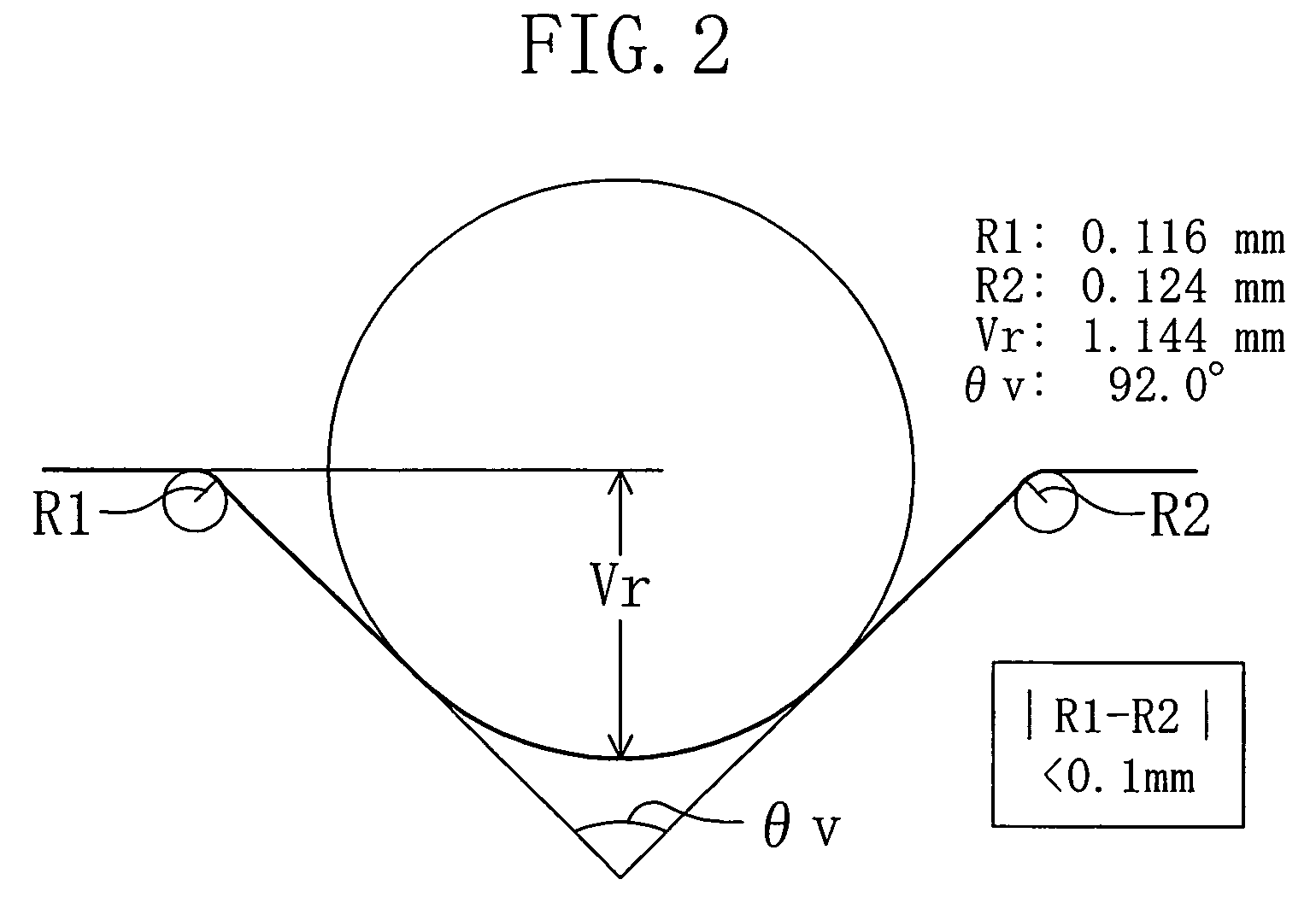Semiconductor substrate, method for fabricating the same, and method for fabricating semiconductor device
a semiconductor device and substrate technology, applied in the field of semiconductor device manufacturing, can solve the problems of inability to achieve the above-mentioned objective value, inability to use conventional cmp technology, size variation or inter-electrode short circuit, etc., to achieve the effect of stabilizing the polishing speed, reducing the polishing speed, and increasing the polishing speed of the locus portion of the polishing pad
- Summary
- Abstract
- Description
- Claims
- Application Information
AI Technical Summary
Benefits of technology
Problems solved by technology
Method used
Image
Examples
embodiment 1
[0055]A semiconductor substrate and a fabrication method therefor according to the first embodiment of the present invention will be described herein below with reference to the drawings.
[0056]The semiconductor substrate according to the first embodiment is characterized in that each of the two shoulder portions of a notch formed in an edge portion thereof has an arcuate configuration and the difference in curvature between the two shoulder portions is not less than 0 mm and not more than 0.1 mm. In other words, the two shoulder portions of the notch in the semiconductor substrate (semiconductor wafer) according to the first embodiment have equal configurations. This prevents the production of steps on the surface of the semiconductor wafer after, e.g., STI-CMP, specifically a reduction in the final thickness of a polished film at the peripheral edge portion of the wafer after STI-CMP.
[0057]FIG. 2 shows an exemplary configuration of the notch in the semiconductor substrate according...
embodiment 2
[0074]A semiconductor substrate and a fabrication method therefor according to the second embodiment of the present invention will be described with reference to the drawings.
[0075]A first feature of the semiconductor substrate according to the second embodiment is that each of the two shoulder portions of a notch formed in an edge portion thereof has an arcuate configuration and the difference in curvature between the two shoulder portions is not less than 0 mm and not more than 0.1 mm, in the same manner as in the first embodiment. A second feature of the semiconductor substrate according to the second embodiment is that the curvature of each of the shoulder portions of the notch is 0.3 mm or more. In other words, the two shoulder portions of the notch have equal configurations in the semiconductor substrate (semiconductor wafer) according to the second embodiment and, in addition, the curvature of each of the two shoulder portions of the notch is larger in the second embodiment t...
embodiment 3
[0096]Referring to the drawings, a method for fabricating a semiconductor device according to a third embodiment of the present invention, specifically a method for fabricating a semiconductor device using the semiconductor substrate (semiconductor substrate characterized by the configurations of the shoulder portions of the notch) according to the first or second embodiment will be described herein below.
[0097]FIGS. 12A to 12C are cross-sectional views illustrating the individual process steps of the method for fabricating a semiconductor device according to the third embodiment.
[0098]First, as shown in FIG. 12A, a protective oxide film (SiO2 film) 102 and a nitride film (SiN film) 103 serving as an end-point detection film for STI-CMP are formed successively on a semiconductor substrate 101. A notch with two shoulder portions having a curvature difference not less than 0 mm and not more than 0.1 mm therebetween is provided in the edge portion of the semiconductor substrate 101. Pr...
PUM
| Property | Measurement | Unit |
|---|---|---|
| angle | aaaaa | aaaaa |
| angle | aaaaa | aaaaa |
| thickness | aaaaa | aaaaa |
Abstract
Description
Claims
Application Information
 Login to View More
Login to View More - R&D
- Intellectual Property
- Life Sciences
- Materials
- Tech Scout
- Unparalleled Data Quality
- Higher Quality Content
- 60% Fewer Hallucinations
Browse by: Latest US Patents, China's latest patents, Technical Efficacy Thesaurus, Application Domain, Technology Topic, Popular Technical Reports.
© 2025 PatSnap. All rights reserved.Legal|Privacy policy|Modern Slavery Act Transparency Statement|Sitemap|About US| Contact US: help@patsnap.com



